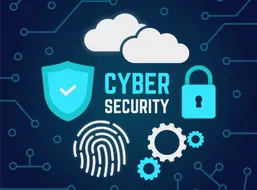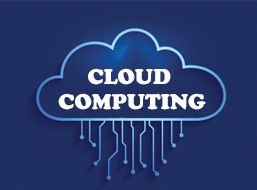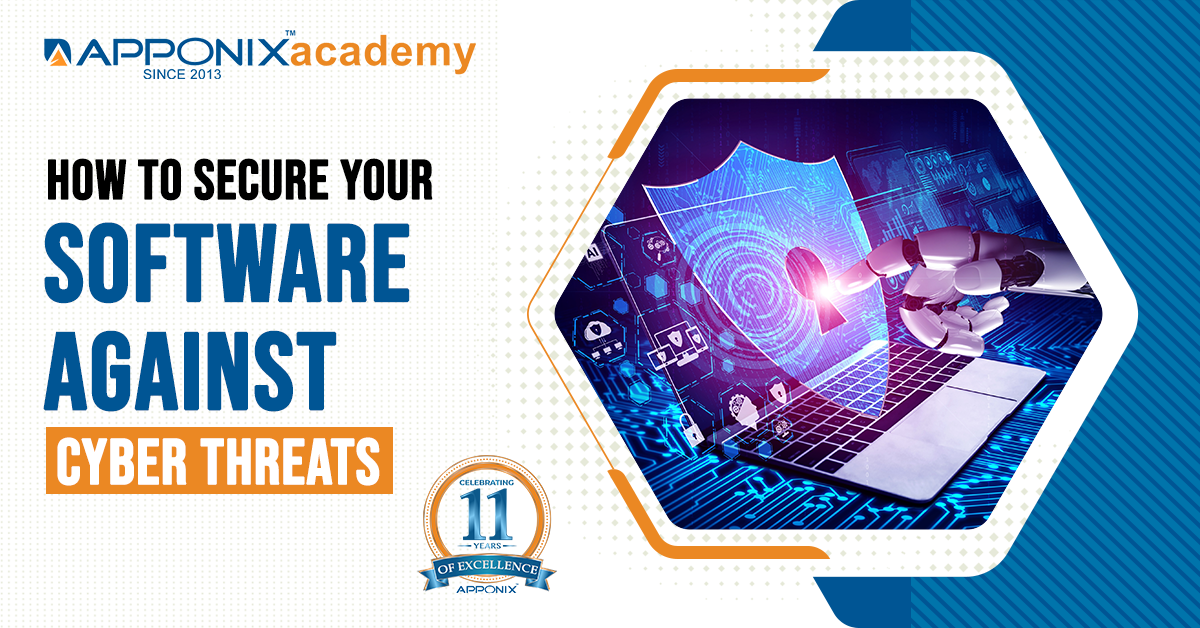Top Blockchain Interview Questions and Answers
1. What is Blockchain?
Answer: Blockchain is a decentralized digital ledger that records transactions across multiple computers. It is designed to be secure, transparent, and tamper-resistant. Each record, or "block," contains a list of transactions and is linked to the previous block through a cryptographic hash, forming a chain. Blockchain allows for peer-to-peer transactions without the need for intermediaries like banks or governments. It is the foundational technology behind cryptocurrencies like Bitcoin.
2. What are the different types of blockchain?
- Answer: There are three main types of blockchain:
- Public Blockchain: Open and accessible to everyone (e.g., Bitcoin, Ethereum). Anyone can participate as a node or validate transactions.
- Private Blockchain: Restricted to a specific group or organization. The network participants are pre-approved, and control is centralized.
- Consortium Blockchain: A hybrid model where multiple organizations govern the blockchain, and access is restricted but shared between trusted parties.
3. What is the difference between Bitcoin and Blockchain?
Answer: Bitcoin is a cryptocurrency that uses blockchain technology to enable secure, peer-to-peer transactions. Blockchain is the underlying technology that supports Bitcoin (and other cryptocurrencies). While Bitcoin is a digital currency, blockchain is a distributed ledger that records all Bitcoin transactions. Bitcoin is just one application of blockchain technology, whereas blockchain has a much broader range of use cases, such as supply chain management and voting systems.
4. What is a block in the Blockchain?
Answer: A block in the blockchain is a collection of transaction records bundled together. It contains a timestamp, a cryptographic hash of the previous block, and a list of transactions. Each block also has a unique identifier (hash) to ensure data integrity. Once a block is added to the blockchain, it is almost impossible to alter the contents of that block without changing all subsequent blocks, making the blockchain tamper-resistant.
5. What is a hash in Blockchain?
Answer: A hash in blockchain refers to a fixed-size string of characters that is generated from an input of any size. In the context of blockchain, a hash function takes the transaction data and transforms it into a unique identifier. It ensures the integrity of the data by making it nearly impossible to reverse the process. Any change in the input data will result in a completely different hash, making it easy to detect alterations.
6. What is mining in the context of Blockchain?
Answer: Mining is the process by which new blocks are added to the blockchain. Miners use computational power to solve complex cryptographic puzzles. The first miner to solve the puzzle gets the right to add the block to the blockchain and is rewarded with cryptocurrency (e.g., Bitcoin). Mining ensures the network’s security and consensus and validates transactions. It also maintains the decentralized nature of blockchain.
7. What is a consensus algorithm?
Answer: A consensus algorithm is a mechanism used in blockchain to achieve agreement among distributed nodes on the validity of transactions and the order in which they occur. It ensures that all participants in the network agree on the current state of the blockchain. Popular consensus algorithms include Proof of Work (PoW), Proof of Stake (PoS), and Delegated Proof of Stake (DPoS).
8. Explain Proof of Work (PoW).
Answer: Proof of Work (PoW) is a consensus algorithm used in blockchain networks like Bitcoin. It requires participants (miners) to solve complex mathematical puzzles to validate transactions and add new blocks to the blockchain. The first miner to solve the puzzle gets to add the block and is rewarded with cryptocurrency. PoW is energy-intensive and requires significant computational resources, but it ensures the security and integrity of the network.
9. What is Proof of Stake (PoS)?
Answer: Proof of Stake (PoS) is a consensus algorithm where validators are chosen to create new blocks based on the amount of cryptocurrency they hold and are willing to "stake" as collateral. Instead of solving complex puzzles like in PoW, PoS requires much less computational power, making it more energy-efficient. Validators are rewarded with transaction fees and a part of the block reward. Ethereum is transitioning from PoW to PoS.
10. What is a smart contract?
Answer: A smart contract is a self-executing contract with the terms of the agreement directly written into code. It runs on a blockchain and automatically executes actions when predefined conditions are met. Smart contracts remove the need for intermediaries and can be used in various applications, such as insurance claims, supply chain tracking, and decentralized finance (DeFi) platforms. Ethereum is a popular platform for deploying smart contracts.
11. What is a cryptocurrency?
Answer: Cryptocurrency is a type of digital or virtual currency that uses cryptographic techniques to secure transactions, control the creation of new units, and verify the transfer of assets. Cryptocurrencies operate on decentralized blockchain networks, making them immune to government control or manipulation. Examples include Bitcoin, Ethereum, and Ripple.
12. What is a wallet in Blockchain?
Answer: A blockchain wallet is a digital tool that allows users to send, receive, and store cryptocurrencies. It contains private and public keys used to sign transactions and access funds. Wallets can be categorized into two types: Hot wallets (connected to the internet) and Cold wallets (offline, more secure). Examples of wallets include MetaMask, Trust Wallet, and Ledger Nano
13. What is a public key and a private key?
Answer: A public key is a cryptographic key that can be shared publicly and is used to receive cryptocurrency transactions. A private key is a secret key that is used to sign transactions and access funds in a wallet. If someone gains access to your private key, they can control your cryptocurrency. Hence, the private key must be kept secure and never shared.
14. What is a 51% attack?
Answer: A 51% attack occurs when a malicious actor or group gains control of more than 50% of the mining or validation power in a blockchain network. This allows them to potentially double-spend coins, halt transactions, or reverse previous blocks. 51% attacks are more common in Proof of Work (PoW) blockchains and can undermine the integrity and security of the network.
15. What is the difference between a coin and a token?
Answer: A coin is a digital currency that operates independently on its own blockchain, like Bitcoin or Ethereum. A token, on the other hand, represents an asset or utility on a particular platform and is built on top of another blockchain, like Ethereum's ERC-20 tokens. Tokens can represent various assets, including digital currencies, ownership shares, or voting rights.
16. What are the benefits of Blockchain?
Answer: Blockchain provides several key benefits:
- Decentralization: Eliminates the need for intermediaries, reducing costs and increasing transparency.
- Security: Transactions are cryptographically secure, and the blockchain’s immutable nature ensures data integrity.
- Transparency: Every transaction is publicly recorded on a distributed ledger, providing full visibility to all participants.
- Immutability: Once data is added to the blockchain, it cannot be altered or deleted, ensuring a permanent record.
17. What is a node in the Blockchain network?
Answer: A node is any active participant in a blockchain network. It is a computer that maintains a copy of the blockchain and validates transactions. Nodes can be classified into full nodes (which store the entire blockchain history) and lightweight or partial nodes (which store only a subset of the blockchain). In decentralized networks, nodes work together to maintain the integrity and security of the blockchain.
18. What is the role of a miner in the Blockchain?
Answer: Miners in a blockchain network validate new transactions and add them to the blockchain. They do this by solving complex cryptographic puzzles, a process known as mining. Miners are rewarded with cryptocurrency for their efforts. In Proof of Work (PoW) systems, miners compete to solve puzzles, while in Proof of Stake (PoS), validators are selected based on their stake in the cryptocurrency.
19. What is a token in Blockchain?
Answer: A token is a digital asset created on a blockchain. Tokens can represent ownership, voting rights, or access to a particular service or platform. Unlike coins, which typically operate on their own blockchain (e.g., Bitcoin), tokens are often created on an existing blockchain, like Ethereum’s ERC-20 token standard. Tokens are widely used in Initial Coin Offerings (ICOs) and decentralized applications (dApps).
20. Explain the concept of decentralization in Blockchain.
Answer: Decentralization refers to the distribution of control and decision-making across a network of participants, rather than being controlled by a single entity. In blockchain, decentralization ensures that no single party can alter or manipulate the data. This is achieved by having multiple copies of the ledger stored across various nodes, which collectively validate and agree on transactions. Decentralization provides security, transparency, and trust within the network.
21. What is a blockchain fork?
Answer: A blockchain fork occurs when a blockchain splits into two separate paths due to a change in its protocol or code. There are two main types of forks:
- Hard Fork: A permanent divergence from the previous version, requiring all participants to upgrade to the new version. This can create two incompatible blockchains (e.g., Bitcoin and Bitcoin Cash).
- Soft Fork: A backward-compatible change to the protocol, where the new version can still communicate with the old version, but some features may be restricted or enhanced.
22. What is a smart contract in simple terms?
Answer: A smart contract is a self-executing contract where the terms of the agreement between buyer and seller are written into lines of code. The contract automatically enforces and executes the terms when the conditions are met, without needing intermediaries. They are usually deployed on blockchain platforms like Ethereum.
23. What is Ethereum?
Answer: Ethereum is an open-source blockchain platform that allows developers to build decentralized applications (dApps) using smart contracts. It is the second most popular blockchain after Bitcoin and enables the creation of tokens through its ERC-20 standard. Ethereum’s native cryptocurrency is Ether (ETH), used for transactions and gas fees on the network.
24. What is a dApp (Decentralized Application)?
Answer: A dApp is an application that runs on a decentralized network rather than on centralized servers. dApps use blockchain technology and smart contracts to enable peer-to-peer transactions. Examples include decentralized finance (DeFi) platforms, decentralized exchanges (DEX), and games.
25. What is Gas in Ethereum?
Answer: Gas in Ethereum refers to the fee required to execute transactions or smart contracts on the Ethereum network. Gas is used to pay for computational work needed to process and validate operations. Gas prices fluctuate depending on network demand. Users pay gas fees in Ether (ETH).
26. What is the difference between a public and private key?
Answer: A public key is used to receive funds or transactions and can be shared with others, whereas a private key is used to sign transactions and access the funds associated with the public key. The private key must be kept secure, as anyone with access to it can control the associated assets.
27. What is an Initial Coin Offering (ICO)?
Answer: An ICO is a fundraising mechanism where new cryptocurrency projects sell tokens in exchange for capital, often to fund the development of their project. ICOs are similar to Initial Public Offerings (IPOs) in the stock market, but instead of shares, investors receive tokens. ICOs have become popular for funding blockchain-based projects but carry regulatory and investment risks.
28. What are ERC-20 tokens?
Answer: ERC-20 is a standard for creating and issuing smart contracts on the Ethereum blockchain. It defines a common list of rules for all Ethereum tokens to follow, ensuring interoperability between dApps and wallets. ERC-20 tokens are used for a variety of purposes, such as utility tokens or governance tokens.
29. What is a permissioned blockchain?
Answer: A permissioned blockchain is a type of blockchain in which participants must be granted permission to join and participate in the network. Unlike public blockchains, permissioned blockchains restrict access and may require an invitation or approval from a governing entity. They are commonly used in enterprise applications.
30. What is a consensus mechanism in Blockchain?
Answer: A consensus mechanism is a protocol used to achieve agreement on a single data value or a single state of the network among distributed nodes in a blockchain. It ensures that all transactions are verified and that the integrity of the blockchain is maintained. Common consensus mechanisms include Proof of Work (PoW), Proof of Stake (PoS), and Practical Byzantine Fault Tolerance (PBFT).
31. What is a blockchain ledger?
Answer: A blockchain ledger is a decentralized and distributed digital record of all transactions that have occurred on a blockchain network. This ledger is maintained by multiple participants (nodes) across the network, ensuring transparency and immutability. Each block in the blockchain contains a list of transactions, and these blocks are linked to form the blockchain.
32. What are the limitations of blockchain technology?
Answer: Some limitations of blockchain technology include:
- Scalability: Blockchain networks can become slow as they grow, as processing many transactions in real-time can be challenging.
- Energy Consumption: Proof of Work (PoW) consensus algorithms, such as those used by Bitcoin, require large amounts of energy to mine.
- Regulatory uncertainty: Legal frameworks for blockchain applications are still evolving in many regions.
- Complexity: Blockchain development and deployment can be complex and require specialized knowledge.
33. What is a Blockchain oracle?
Answer: A blockchain oracle is an external data source or service that provides real-world data to smart contracts. Oracles feed information from external sources (e.g., weather, market prices) to a blockchain to trigger actions or events in smart contracts. They are important for making blockchain applications useful in real-world scenarios.
34. What is the role of a miner in blockchain networks like Bitcoin?
Answer: In Bitcoin, miners validate new transactions and add them to the blockchain by solving cryptographic puzzles. This process, known as mining, helps secure the network, verify transactions, and create new Bitcoin. Miners are rewarded with newly minted Bitcoin and transaction fees for their work.
35. What is the Byzantine Generals Problem?
Answer: The Byzantine Generals Problem is a thought experiment in computer science that illustrates the challenges of achieving consensus in distributed systems with unreliable participants. Blockchain consensus algorithms, such as Proof of Work, aim to solve this problem by ensuring that even if some participants are malicious, the network can still reach agreement on valid transactions.
36. What is a sidechain in blockchain?
Answer: A sidechain is a separate blockchain that is attached to a main blockchain (parent chain) and allows for the transfer of assets between the two. Sidechains help offload traffic from the main blockchain, reducing congestion and increasing scalability. They also allow for the implementation of different features without altering the main blockchain.
37. What is Hyperledger?
Answer: Hyperledger is an open-source collaborative effort created to advance cross-industry blockchain technologies. It is hosted by The Linux Foundation and provides frameworks and tools to build enterprise-grade blockchain solutions. Hyperledger includes various projects such as Hyperledger Fabric, Hyperledger Sawtooth, and Hyperledger Indy, designed for different use cases.
38. What is an ICO and how does it differ from an IPO?
Answer: An Initial Coin Offering (ICO) is a fundraising method where new projects sell tokens in exchange for capital. It differs from an Initial Public Offering (IPO) in that ICOs do not offer ownership or shares in a company; instead, they offer utility tokens or assets. ICOs are also less regulated than IPOs and have been a common method for funding blockchain projects.
39. What is a consensus mechanism used in Ethereum 2.0?
Answer: Ethereum 2.0 uses a Proof of Stake (PoS) consensus mechanism instead of Proof of Work (PoW). PoS allows validators to be chosen to create new blocks based on the amount of cryptocurrency they "stake" as collateral, rather than solving computational puzzles. PoS is more energy-efficient and scalable than PoW, making Ethereum 2.0 capable of handling a higher volume of transactions.
40. What is a token burn in blockchain?
Answer: Token burning refers to the process of deliberately sending a cryptocurrency or token to a wallet address where it cannot be accessed or used, effectively removing it from circulation. This is done to reduce the supply of the token, which can increase scarcity and potentially drive up its value. Token burns are often part of tokenomics strategies to manage inflation or deflation in a crypto ecosystem.
41. What is an atomic swap?
Answer: An atomic swap is a smart contract-enabled technology that allows for the direct exchange of one cryptocurrency for another, without the need for a trusted third party or exchange. Atomic swaps are "atomic" because they either complete entirely or not at all, ensuring security and fairness in the exchange process.
42. What is a smart contract audit?
Answer: A smart contract audit is the process of reviewing and analyzing the code of a smart contract to identify vulnerabilities or issues that could compromise its security. Auditing smart contracts is essential to ensure that the contract functions as intended and is free from bugs, coding errors, or exploits that could be used by malicious actors.
43. What is the Lightning Network?
Answer: The Lightning Network is a second-layer solution built on top of the Bitcoin blockchain to enable faster and cheaper transactions. It works by creating off-chain channels for transactions, where users can transact multiple times without waiting for each transaction to be confirmed on the main Bitcoin blockchain. Only the final settlement is recorded on-chain, improving scalability.
44. What is a tokenized asset?
Answer: A tokenized asset is a digital representation of a real-world asset on a blockchain. Examples include tokenized real estate, commodities, or artwork. Tokenizing assets enables fractional ownership, greater liquidity, and easier transfer across borders. Tokenization can help unlock value in traditionally illiquid assets.
45. What is an enterprise blockchain?
Answer: An enterprise blockchain is a blockchain network specifically designed for business and commercial purposes. Unlike public blockchains, enterprise blockchains are often permissioned, meaning only authorized participants can join. Enterprise blockchains are used for applications such as supply chain management, financial services, and healthcare data management.
46. What is consensus fault tolerance?
Answer: Consensus fault tolerance refers to the ability of a blockchain network to continue functioning properly even if some of the nodes or participants in the network behave maliciously or fail. A blockchain's consensus algorithm is designed to be resilient to certain percentages of faulty or dishonest nodes. For example, Bitcoin’s PoW and Ethereum’s PoS both ensure fault tolerance through their respective consensus mechanisms.
47. What is a private blockchain network used for?
Answer: Private blockchain networks are typically used by businesses and organizations to create secure, permissioned environments for conducting transactions or managing data. Private blockchains are not open to the public, and participants must be invited or approved. They are commonly used in supply chain management, internal enterprise applications, and financial services.
48. How does Blockchain enhance security?
Answer: Blockchain enhances security by using cryptographic techniques to validate transactions and store them in a distributed ledger that is immutable and tamper-resistant. Once a transaction is recorded in a block and added to the chain, it cannot be altered without changing all subsequent blocks, which requires the consensus of the majority of the network. This makes blockchain highly secure against fraud and data manipulation.
49. What is a DAO (Decentralized Autonomous Organization)?
Answer: A Decentralized Autonomous Organization (DAO) is an organization that operates through smart contracts and blockchain technology without the need for centralized management. DAOs are governed by a set of rules written into smart contracts, and decisions are made by token holders through voting mechanisms. DAOs are used in decentralized finance (DeFi) applications and other blockchain-based governance systems.
50. What is a transaction fee in blockchain?
Answer: A transaction fee in blockchain is a small amount of cryptocurrency paid by users to miners or validators to process and confirm their transactions. The fee compensates the miners or validators for using computational resources to verify and add the transaction to the blockchain. Transaction fees vary depending on the network's congestion and the complexity of the transaction.
51. What is a token economy?
Answer: A token economy refers to an economic system where digital tokens are used as a means of exchange within a blockchain-based network. Tokens can represent ownership, voting rights, rewards, or access to a particular service. In a token economy, blockchain helps to create transparent, secure, and decentralized systems for transactions, incentivizing user participation and network growth.
52. What is Proof of Authority (PoA)?
Answer: Proof of Authority (PoA) is a consensus algorithm where a few trusted validators are chosen to create new blocks and verify transactions. It is faster and more energy-efficient than Proof of Work (PoW) because it doesn’t require computational work. PoA is often used in private or permissioned blockchains where trust is established in a small set of known validators.
53. What is a DAO governance token?
Answer: A DAO (Decentralized Autonomous Organization) governance token is a token used to give holders voting power within the DAO. Token holders can vote on proposals such as funding decisions, changes to protocols, or project direction. This decentralized governance structure allows the community to have direct control over the organization’s activities.
54. What is the difference between permissioned and permissionless blockchains?
Answer:
- Permissioned blockchains require users to obtain permission from a central authority to join the network and participate in transactions or validation.
- Permissionless blockchains (like Bitcoin and Ethereum) are open to anyone and don’t require permission to join or participate in the network. Permissionless blockchains are decentralized and trustless, while permissioned ones tend to be controlled by a specific organization or consortium.
55. What is a Blockchain explorer?
Answer: A blockchain explorer is a tool or application that allows users to search and view details about transactions, blocks, and addresses on a blockchain. Blockchain explorers provide transparency, enabling users to track specific transactions, verify block confirmations, and view the overall status of the network. Examples include Blockchain and Etherscan.
56. What is a hard fork and soft fork in blockchain?
Answer:
- Hard Fork: A radical change to the blockchain’s protocol that makes previously valid transactions invalid. Hard forks result in a split into two separate blockchains (e.g., Bitcoin and Bitcoin Cash).
- Soft Fork: A backward-compatible change to the protocol where old nodes can still participate in the network, but some features may be restricted or modified.
57. What is the concept of tokenomics?
Answer: Tokenomics refers to the economic model behind a cryptocurrency or token, including its supply, distribution, usage, and incentives. It governs how tokens are created, distributed, and managed within a blockchain ecosystem. A well-designed tokenomics model ensures that the token retains value, promotes user adoption, and incentivizes participants.
58. What is a digital signature?
Answer: A digital signature is a cryptographic mechanism used to verify the authenticity of digital messages or transactions. It is created using the private key, which is unique to the sender. The digital signature ensures that the message has not been altered and confirms the identity of the sender. It is an essential part of ensuring security in blockchain transactions.
59. What is a permissioned vs. permissionless blockchain?
Answer:
- Permissioned Blockchain: Access is restricted to selected participants who are granted permissions to read, write, and validate transactions (e.g., Hyperledger).
- Permissionless Blockchain: Open to anyone; participants can join without needing permission. It’s decentralized and trustless (e.g., Bitcoin, Ethereum).
60. What is a 51% attack in blockchain?
Answer: A 51% attack occurs when a single entity or group gains control of more than 50% of the computational power (or stake, in the case of Proof of Stake) in a blockchain network. With this control, the attacker can potentially double-spend coins, block transactions, and alter the blockchain's history, undermining the network's integrity.
61. What is Layer 2 technology?
Answer: Layer 2 technology refers to solutions built on top of an existing blockchain (Layer 1) to improve scalability and transaction throughput. Layer 2 solutions, such as the Lightning Network for Bitcoin or Optimistic Rollups for Ethereum, process transactions off-chain and then settle them on the main blockchain, reducing congestion and transaction costs.
62. What is a block reward?
Answer: A block reward is the incentive that miners or validators receive for successfully adding a new block to the blockchain. In Proof of Work (PoW) systems like Bitcoin, the reward is newly minted cryptocurrency. In Proof of Stake (PoS) systems, it may include transaction fees and staked tokens. Block rewards help incentivize participants to maintain network security.
63. What is the role of a blockchain validator?
Answer: A blockchain validator is a participant in a Proof of Stake (PoS) blockchain who verifies and validates transactions and blocks. Validators are chosen based on the number of tokens they stake, and they are rewarded for maintaining the network’s integrity. Validators perform similar functions to miners in Proof of Work (PoW) systems, but PoS is more energy-efficient.
64. What are zk-SNARKs?
Answer: zk-SNARKs (Zero-Knowledge Succinct Non-Interactive Arguments of Knowledge) are cryptographic proofs that allow one party to prove to another that a statement is true without revealing any specific information about the statement. zk-SNARKs are used in privacy-focused blockchains like Zcash to enable confidential transactions, ensuring that transaction details (amounts, sender, receiver) remain private.
65. What are smart contract vulnerabilities?
Answer: Smart contract vulnerabilities are flaws or weaknesses in the code that can be exploited by attackers. Common vulnerabilities include reentrancy attacks (where external contracts can manipulate the flow of the contract), integer overflows/underflows, and incorrect logic. Proper auditing and testing are critical to ensuring smart contracts are secure.
66. What is a multi-signature wallet?
Answer: A multi-signature (multisig) wallet is a type of cryptocurrency wallet that requires multiple private keys to authorize a transaction. For example, a wallet might require signatures from three out of five designated parties to approve a transaction. Multisig wallets are used for enhanced security and are commonly used in organizational and corporate settings.
67. What is a Merkle Tree in blockchain?
Answer: A Merkle Tree is a data structure used in blockchain to efficiently summarize and verify the integrity of large sets of data. It works by recursively hashing pairs of transactions, then combining those hashes into a single root hash. Merkle Trees are used in blockchains to ensure the integrity of the data and to minimize the amount of data required for verification.
68. What is Ethereum 2.0?
Answer: Ethereum 2.0 (Eth2) is an upgrade to the Ethereum network that aims to improve scalability, security, and energy efficiency. The main change is the transition from the energy-intensive Proof of Work (PoW) consensus algorithm to Proof of Stake (PoS). Ethereum 2.0 also introduces shard chains, allowing the network to process transactions in parallel and handle a higher volume of transactions.
69. What is a whitepaper in cryptocurrency?
Answer: A whitepaper in cryptocurrency is a detailed document that explains the technical aspects, goals, and vision of a blockchain project or cryptocurrency. It typically includes information about the problem the project seeks to solve, the technology behind it, tokenomics, and the team behind the project. Whitepapers are commonly used during Initial Coin Offerings (ICOs) to attract investors.
70. What is decentralized finance (DeFi)?
Answer: Decentralized Finance (DeFi) is a movement that aims to recreate traditional financial services such as lending, borrowing, trading, and insurance using blockchain technology. DeFi platforms are built on public blockchains like Ethereum and use smart contracts to automate transactions without intermediaries like banks. Examples include decentralized exchanges (DEXs) and yield farming.
71. What is the difference between public and private keys?
Answer: A public key is used to receive funds or verify signatures and can be shared freely. A private key is used to sign transactions and access the cryptocurrency associated with the public key. Private keys should be kept secure, as anyone who has access to the private key can control the funds linked to it.
72. What are oracles in blockchain?
Answer: Oracles are external data sources that provide real-world information to smart contracts on the blockchain. Since blockchains cannot access external data on their own, oracles bridge the gap by feeding information such as stock prices, weather data, or real-world events into the blockchain. Oracles enable smart contracts to interact with real-world scenarios.
73. What are the advantages of using blockchain for supply chain management?
Answer: Blockchain provides transparency, traceability, and security for supply chain management. With blockchain, every step in the supply chain, from manufacturing to delivery, is recorded and verified on an immutable ledger. This improves visibility, reduces fraud, ensures the authenticity of products, and simplifies the tracking of goods in real-time.
74. What is a hash rate in blockchain mining?
Answer: Hash rate refers to the computational power used by miners to solve the cryptographic puzzles in blockchain mining. It is typically measured in hashes per second (H/s) and determines how fast a miner can process transactions and compete to add a new block. A higher hash rate increases the chances of successfully mining a block.
75. What are decentralized exchanges (DEX)?
Answer: Decentralized exchanges (DEX) are platforms that allow users to trade cryptocurrencies directly with each other without a central authority. DEXs use smart contracts to facilitate transactions and typically offer greater privacy and security compared to centralized exchanges (CEXs), though they can have lower liquidity.
76. What is a cold wallet?
Answer: A cold wallet is a cryptocurrency wallet that is not connected to the internet, making it less vulnerable to hacks and malware. Cold wallets are used for storing large amounts of cryptocurrency securely and are typically physical devices like hardware wallets (e.g., Ledger, Trezor) or paper wallets.
77. What is a hot wallet?
Answer: A hot wallet is a cryptocurrency wallet that is connected to the internet and allows for quick and easy access to funds. Hot wallets are commonly used for day-to-day transactions but are more vulnerable to hacking compared to cold wallets. Examples include mobile wallets, web wallets, and software wallets.
78. What are the potential use cases for blockchain beyond cryptocurrency?
Answer: Blockchain can be applied in a wide range of industries beyond cryptocurrency, including:
- Supply Chain Management: Tracking goods from production to delivery.
- Healthcare: Securing medical records and enabling interoperability between systems.
- Voting: Creating secure and transparent voting systems.
- Identity Management: Providing secure, decentralized identity verification.
- Intellectual Property: Protecting and tracking ownership of creative works.
79. What is the role of a cryptographic hash in blockchain?
Answer: Cryptographic hashes are used to ensure the integrity and security of data on a blockchain. A hash function takes an input (such as a transaction) and produces a fixed-length string of characters, which is the hash. Each block contains the hash of the previous block, linking them in a chain and ensuring that altering one block would require changing all subsequent blocks.
80. What is a tokenized security?
Answer: A tokenized security is a digital representation of a real-world asset, such as stocks, bonds, or real estate, on a blockchain. Tokenized securities allow for fractional ownership, faster transactions, and broader access to traditionally illiquid assets. These tokens are subject to regulatory oversight and can be traded on blockchain-based platforms.
81. What is a smart contract audit?
Answer: A smart contract audit is the process of reviewing and analyzing the code of a smart contract to ensure that it is secure, functional, and free from vulnerabilities. Audits are conducted by professional security experts or auditing firms and are crucial before deploying smart contracts on a blockchain, especially when large sums of money or sensitive data are involved.
82. What is a blockchain node?
Answer: A blockchain node is any computer that participates in a blockchain network by validating and relaying transactions. Nodes can be categorized as full nodes, which store the entire blockchain and validate transactions, or lightweight nodes, which store only part of the blockchain and rely on full nodes for validation.
83. What is the Byzantine Fault Tolerance (BFT)?
Answer: Byzantine Fault Tolerance (BFT) is a property of a blockchain network that ensures it can continue to function correctly even if some of the nodes in the network behave maliciously or fail. BFT algorithms are crucial for maintaining consensus in decentralized networks and are often used in Proof of Stake (PoS) and other consensus mechanisms.
84. What is a gas fee in Ethereum?
Answer: Gas fees in Ethereum are the costs paid by users to execute transactions or run smart contracts on the Ethereum network. The fee compensates miners (or validators in Ethereum 2.0) for the computational resources needed to process and validate transactions. Gas prices fluctuate depending on network demand and congestion.
85. What is the difference between ERC-20 and ERC-721 tokens?
Answer:
- ERC-20: A standard for creating fungible tokens on the Ethereum blockchain, where each token is identical in value and can be exchanged on a one-to-one basis (e.g., USDT, DAI).
- ERC-721: A standard for creating non-fungible tokens (NFTs) on Ethereum. Each token is unique and represents ownership of a specific asset, such as digital art or collectibles.
86. What is a hard wallet?
Answer: A hardware wallet, or "hard wallet," is a physical device used to store cryptocurrency private keys offline. By keeping keys offline, it minimizes the risk of hacks or malware attacks that can occur with online wallets. Popular examples include Trezor and Ledger.
87. What are Layer 2 rollups in Ethereum?
Answer: Layer 2 rollups are scalability solutions designed to increase Ethereum's transaction throughput. Rollups process transactions off-chain but post the data on the main Ethereum chain. There are two types:
Optimistic Rollups: Assume transactions are valid and only check them when disputed.
Zero-Knowledge Rollups (zk-Rollups): Use cryptographic proofs to validate transactions off-chain before committing them to the main chain.
88. What is a consensus mechanism?
Answer: A consensus mechanism is a protocol used in blockchain networks to achieve agreement on the state of the ledger. It ensures that all nodes in a decentralized network agree on the validity of transactions without relying on a central authority. Common consensus mechanisms include Proof of Work (PoW), Proof of Stake (PoS), and Delegated Proof of Stake (DPoS).
89. What are sidechains in blockchain?
Answer: Sidechains are separate blockchains that are attached to a parent blockchain, allowing for the transfer of assets between the main chain and the sidechain. Sidechains enable faster transactions and more flexibility by offloading certain operations from the main blockchain. For example, Liquid Network is a sidechain for Bitcoin.
90. What is an ICO (Initial Coin Offering)?
Answer: An Initial Coin Offering (ICO) is a fundraising method used by blockchain projects to raise capital. During an ICO, a new cryptocurrency or token is sold to investors, typically in exchange for established cryptocurrencies like Bitcoin or Ethereum. ICOs are similar to IPOs in the traditional stock market but are less regulated.
91. What is a token burn?
Answer: Token burning refers to the process of permanently removing a certain amount of tokens from circulation. This is done by sending tokens to an address where they cannot be spent or used. Token burns can help reduce the total supply, potentially increasing the scarcity and value of the remaining tokens.
92. What is a white-hat hacker in blockchain?
Answer: A white-hat hacker is a cybersecurity expert who uses their skills to identify and fix vulnerabilities in a system, rather than exploit them for malicious purposes. In the blockchain space, white-hat hackers often perform security audits on smart contracts or attempt to uncover flaws in decentralized applications (dApps).
93. What is a stablecoin?
Answer: A stablecoin is a type of cryptocurrency designed to maintain a stable value, often pegged to a fiat currency like the US Dollar. Stablecoins are used to reduce the volatility typically associated with cryptocurrencies like Bitcoin and Ethereum. Examples include Tether (USDT) and USD Coin (USDC).
94. What is the difference between centralized and decentralized exchanges?
Answer:
- Centralized Exchanges (CEX): Platforms that act as intermediaries for buying and selling cryptocurrencies. They are owned and operated by a central authority (e.g., Binance, Coinbase). CEXs offer ease of use and higher liquidity but come with the risk of hacks and regulatory oversight.
- Decentralized Exchanges (DEX): Platforms that allow peer-to-peer cryptocurrency trading without the need for intermediaries. DEXs are more secure and offer greater privacy but often have lower liquidity and more complex interfaces (e.g., Uniswap, Sushiswap).
95. What is the role of miners in blockchain?
Answer: Miners are participants in blockchain networks that validate transactions and add them to the blockchain by solving cryptographic puzzles (in PoW systems). In return for their work, miners are rewarded with newly minted cryptocurrency (block rewards) and transaction fees. Mining ensures the security and integrity of the network.
96. What is a DAO (Decentralized Autonomous Organization)?
Answer: A DAO is an organization that operates through rules encoded as smart contracts on a blockchain. It is decentralized, meaning no central authority controls the decision-making process. DAOs use governance tokens, allowing members to propose and vote on changes, fund projects, or make key decisions.
97. What is a blockchain hash function?
Answer: A blockchain hash function is a cryptographic function that takes an input (or "message") and returns a fixed-size string of characters, which is typically a hexadecimal value. The hash function is used to generate a unique identifier for each block and ensures the integrity of the data. It is a crucial element in securing blockchain data.
98. What is a state channel in blockchain?
Answer: A state channel is a two-way interaction between participants in a blockchain network that allows transactions to occur off-chain, while the final state is recorded on-chain. State channels are used to reduce congestion on the main blockchain and facilitate fast, low-cost transactions, often used in games or micropayments.
99. What is a liquidity pool in DeFi?
Answer: A liquidity pool in DeFi is a collection of funds locked in a smart contract that provides liquidity for decentralized exchanges or other DeFi protocols. Users who contribute to liquidity pools (known as liquidity providers) earn a share of the transaction fees or rewards generated by the pool. Popular examples include Uniswap and Balancer.
100. What is blockchain interoperability?
Answer: Blockchain interoperability refers to the ability of different blockchain networks to communicate with each other and exchange data or assets. Interoperability allows for greater collaboration and innovation across blockchain ecosystems. Solutions like Polkadot, Cosmos, and wrapped tokens are designed to enhance blockchain interoperability.







